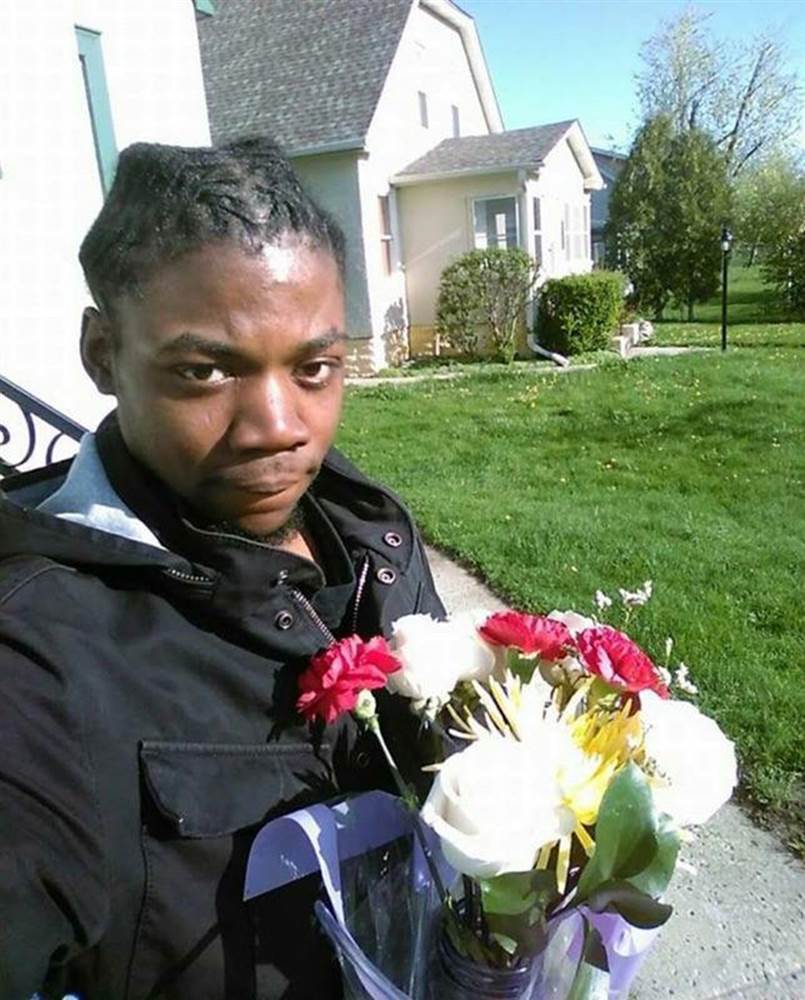
Fibonacci Blue, Flickr, Justice for Jamar Response Action
The young black man directing traffic at the barricade on Plymouth Avenue in North Minneapolis was not a police officer. He was one of the protesters occupying the street in front of the city’s 4th Precinct police station. For more than two weeks, protesters led by Black Lives Matter and the NAACP took over this street, just a few blocks from where police shot and killed 24-year-old Jamar Clark on Nov. 15.
Undeterred by violence from white supremacists and Minnesota’s cold and snowy winter, activists are calling not only for justice for Clark but also for an end to racist policing and unequal socioeconomic structures throughout the city and state. Police dismantled their encampment on Dec. 3, but protesters are vowing to shift the focus to the Minneapolis City Hall.
Racism underlies police killings of black men and women — in Ferguson, in Minneapolis, in Chicago, in Baltimore and across the country. But the violence meted out to black people goes beyond the actions of individual police officers. Institutional and structural racism is evident not only in a hail of police bullets but also in the disparate health care, education, housing and employment that ensure black people live with more difficulty and die earlier than their white counterparts.
North Minneapolis, the site of Clark’s shooting and ongoing protests, has a long history of police brutality, poverty and government neglect. White flight from North Minneapolis began in the 1960s, amid residential segregation, lack of job opportunities and high poverty levels in the black community.
In 1966, local leaders opened the Way, a controversial community center aimed at empowering the black community through youth recreational and educational programs, as well as voter registration campaigns and pressure on the city for services such as garbage collection. The Way was identified with the 1960s Black Power movement, and quickly came under criticism for demanding reforms to the police department. The Minneapolis Police Department's 4th Precinct station now occupies the ground where the Way once stood.
Minnesota prides itself on progressive politics, a thriving economy and excellent public education, but these benefits do not extend to the state's black community. The experience of people of color in Minnesota, says a 2014 ACLU report, “is hidden behind the widespread prosperity of white residents.”
The report notes an unemployment rate for black Minnesotans that is 2.8 times that of white Minnesotans, and widespread residential segregation. North Minneapolis has a poverty rate of 36 percent, compared to a citywide rate of 22 percent. The median household income for white residents in Saint Paul and Minneapolis is $70,900 compared to $25,517 for black households, according to the nonprofit research center, Minnesota Compass. High school graduation rate is 80 percent for white students compared to only 60 percent for black youth.
The Minneapolis Police Department has been criticized for racism and violence for decades. Prominent cases include the shooting death of Terrance Franklin in 2013, the 2006 shooting death of Fong Lee and the shooting of police officer Duy Dinh Ngo in 2010 by a fellow officer. Police dominate the city's supposedly civilian review board.
Some 94 percent of the city’s police live outside Minneapolis, and the police force is disproportionately white. The ACLU report analyzed arrests for low-level offenses and found that black people were 8.6 times as likely to be arrested for low-level offenses as white people. In poor and minority neighborhoods, police officers are viewed not as serving and protecting the community, but rather “as oppressors who harass and arrest,” according to the report.
On Nov. 18, police shot canisters of mace into the crowd outside the 4th Precinct station. They hit some protesters with batons, tore down banners and pointed guns at City Council members and, in one dramatic moment, at Rep. Keith Ellison’s teenage son. An uneasy peace returned after that night, with protesters vowing to remain in place until their demands for release of videos of Clark’s shooting and arrest of the officer who shot him are met. At the request of Mayor Betsy Hodges, the Department of Justice is investigating the shooting. But city officials, including Hodges, insist the videotapes will not be released until the investigations are complete.
A few days later, on Nov. 23, white supremacists visited the protest site, trying to stir up trouble. When protesters demanded that four of these visitors leave, the men opened fire, wounding five black male protesters. Four white men have since been arrested and charged with rioting and assault.
Chicago offers another example of attempts to protect police. The recent release of a video showing a white police officer fatally shooting a black teenager in October 2014 led to angry protests over the delay in releasing the tapes and charging the officer. Following the court-ordered videotape release, Officer Jason Van Dyke is facing first-degree murder for shooting 17-year-old Laquan McDonald. Mayor Rahm Emmanuel fired the police chief, but protesters hold the mayor responsible for refusing to release the dashboard video. As in Minneapolis, Chicago protesters’ demands reach beyond the immediate case to the wider issues of institutional racism in the city.
As with Minneapolis, an ACLU report found significant racial disparities in traffic stops and searches in Chicago. Chicago’s police department remains disproportionately white despite pledges to hire more black and Hispanic officers. The city’s residential segregation continues, as do disparities in health, income and education.
The protesters in Minneapolis and cities across the country are demanding justice for young black men killed by police. At a minimum, that means transparency and release of videotapes, and charging of officers rather than referral to grand juries, which almost never indict police.
Racism is an intractable U.S. political reality. Beyond the police shootings of black men and women, institutional and structural racism produces wide disparities between black and white residents in education, income, home ownership, health and employment. That racism is harder to see (at least for white Americans) and far harder to dismantle.
3 WAYS TO SHOW YOUR SUPPORT
- Log in to post comments
















